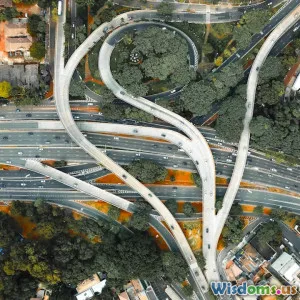
Smart Technologies in Urban Planning
6 min read Explore how smart technologies are transforming urban planning for safer, efficient, and more sustainable cities. (0 Reviews)
Smart Technologies in Urban Planning
Urban planning is poised at a pivotal intersection of technology, sustainability, and community engagement. As cities around the globe continue to grapple with the challenges of rapid urbanization, climate change, and resource management, smart technologies have emerged as essential tools for innovative urban planning. This article explores how these technologies are reshaping our cities, making them safer, more efficient, and more sustainable.
The Evolution of Smart Technologies in Urban Planning
The concept of smart urban planning integrates technology into the fabric of city management and infrastructure. With the rise of the Internet of Things (IoT), big data analytics, and artificial intelligence (AI), urban planners can now leverage vast amounts of real-time data to inform decision-making processes. This evolution represents a significant shift from traditional urban planning methods, which often relied on static data and infrequent assessments.
1. Data-Driven Decision Making
Data is at the heart of smart urban planning. Planners can utilize data from various sources, including sensors, social media, and traffic cameras, to analyze urban patterns and trends. For instance, cities like Barcelona have implemented smart sensors to monitor air quality and traffic flow. The analytics derived from these technologies allow city officials to make informed decisions regarding infrastructure improvements and public health initiatives.
2. Enhancing Mobility and Transportation
Smart transportation systems are revolutionizing how cities manage mobility. Technologies such as smart traffic lights, real-time public transport tracking, and autonomous vehicles are reducing congestion and improving commuting experiences. In cities like Singapore, integrated transport apps provide residents with real-time updates on public transport schedules, traffic conditions, and alternative routes, promoting more efficient travel.
3. Sustainable Urban Development
Sustainability is a core principle of modern urban planning, and smart technologies play a critical role in achieving sustainability goals. For example, energy management systems can optimize the use of resources in buildings, significantly reducing energy consumption. Smart grids allow for better energy distribution and enable the integration of renewable energy sources. Cities like Copenhagen utilize smart waste management systems that monitor waste levels in bins, ensuring efficient collection and reducing carbon footprints.
4. Community Engagement and Participation
Smart technologies not only enhance efficiency but also foster greater community engagement. Digital platforms and mobile apps enable residents to participate in urban planning processes actively. Crowdsourcing platforms allow citizens to voice their opinions and suggest improvements for public spaces and services. For example, in New York City, the NYC Department of Transportation has used public feedback tools to gather input on bike lane placements and street redesigns, leading to more community-oriented solutions.
5. Resilience and Disaster Management
In an era of climate change, urban resilience is paramount. Smart technologies can enhance disaster preparedness and response. Geographic Information Systems (GIS) help planners visualize and simulate disaster scenarios, enabling better emergency response strategies. During Hurricane Sandy, New York City used real-time data to manage evacuations and resource allocation effectively, demonstrating the importance of smart technologies in crisis situations.
Challenges and Considerations
While the benefits of smart technologies in urban planning are substantial, challenges remain. Issues related to data privacy, security, and equity must be addressed to ensure that these technologies serve all community members. Additionally, the digital divide can exacerbate inequalities if certain populations lack access to the technologies or data necessary to participate in urban planning processes.
Conclusion
Smart technologies are fundamentally transforming urban planning, offering innovative solutions to meet the challenges of modern cities. By leveraging data, enhancing mobility, promoting sustainability, fostering community engagement, and improving resilience, urban planners can create more livable, efficient, and inclusive cities. As we look to the future, embracing these technologies will be crucial in shaping urban environments that are not only smart but also equitable and responsive to the needs of their inhabitants.
As cities continue to evolve, the integration of smart technologies will be key to creating urban spaces that thrive in the face of change, ensuring a better quality of life for all residents.
Rate the Post
User Reviews
Popular Posts





















